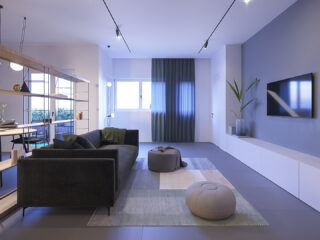
ARCHITECTURE, COMMUNITY-CENTRIC DESIGN
MOSQUE FEASIBILITY STUDY
Key principles
Sustainability, biomimicry, passive energy strategies, natural ventilation, cultural harmony
Info
Year: 2022
Country: Eastern Province, KSA
Client: Private Client
The White-Shell Mosques draw inspiration from the traditional architecture of the Gulf region, combining coral aggregate construction with a simple yet striking white exterior. Designed in the classic courtyard style, the layout features rooms opening onto a central courtyard and arcaded verandahs, offering both shelter and natural ventilation. Biomimicry plays a key role in the design, inspired by the natural forms of shells, reflected in the radial modular structure and transitional arcade spaces.
Sustainability is central to the mosque’s design, aligning with Islamic principles of fostering community interaction and social responsibility. Passive energy-saving technologies, such as strategically placed openings to capture natural airflow, create a balanced microclimate for the courtyard and prayer hall. High ceilings, natural ventilation, and mechanical cooling systems ensure comfort in the hot, humid climate. Environmentally friendly materials, water elements, green tiling, and controlled facades further enhance the mosque’s sustainability.
The design emphasizes simplicity and a connection to nature, creating a serene space for prayer while honoring local vernacular architecture. Rooted in the socio-cultural norms of Saudi Arabia, particularly the Eastern Province, the mosque features:
• A conic main prayer space that evokes unity and symmetry through light and shadow interplay.
• An open courtyard with lush greenery, including trees and shrubs, for gathering and prayer.
• A tall, slender minaret centrally positioned in the courtyard, serving as a focal point.
• Colonnaded arches around the courtyard, providing shaded outdoor spaces.
• A surrounding plaza and courtyard adorned with geometric patterns, such as hexagonal shapes, integrating green spaces both within and around the mosque.
• Situated within a larger urban context, the mosque forms part of a well-developed community cluster, blending seamlessly into its environment while offering a spiritual and social hub for the community.









